Abstract
A number of barriers exist which prevent the widespread integration of practice guidelines with electronic medical record systems. These include dependencies on clinical databases, as well as problems with converting existing guideline specifications into computable rules. We are developing the MBTA (Modeling Better Treatment Advice) practice guideline system which uses a distributed client-server architecture and an object-oriented data representation to support practice guidelines usable by different electronic medical record systems. We describe the structure and organization of MBTA, focusing on how an open systems design, combined with principles of guideline implementation, can be used to provide a general purpose guideline server for use by a variety of clinical workstations.
Full text
PDF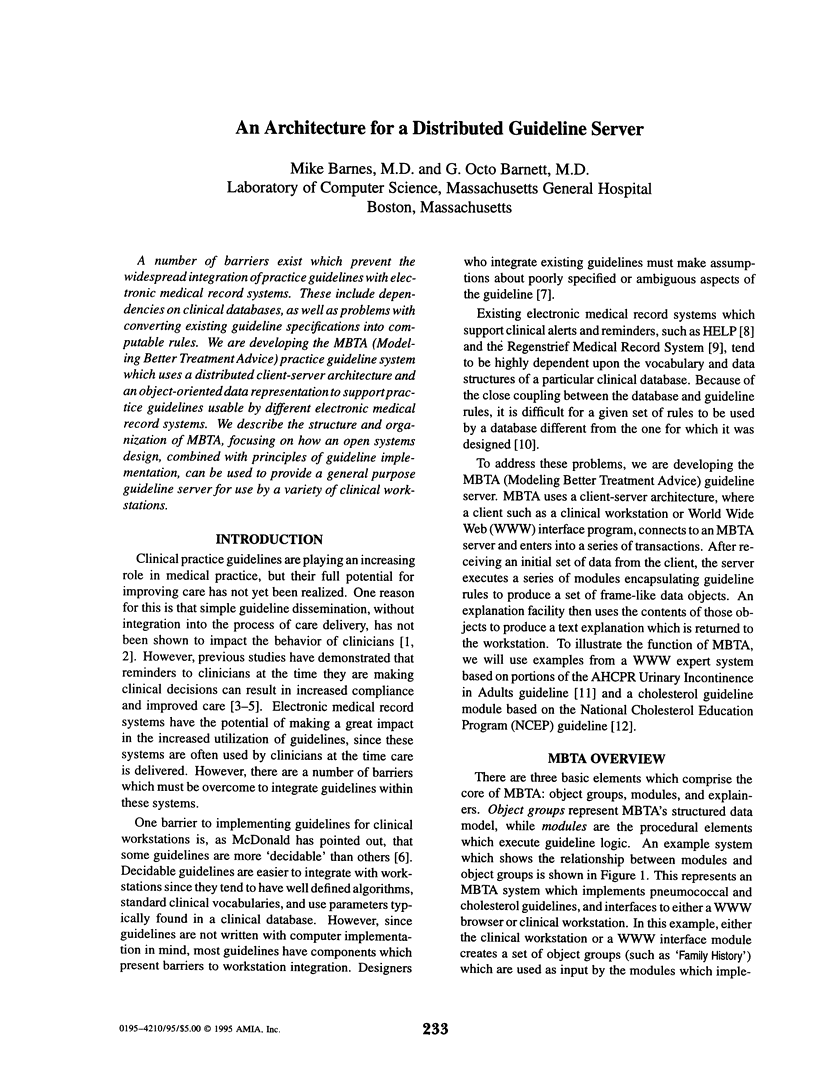
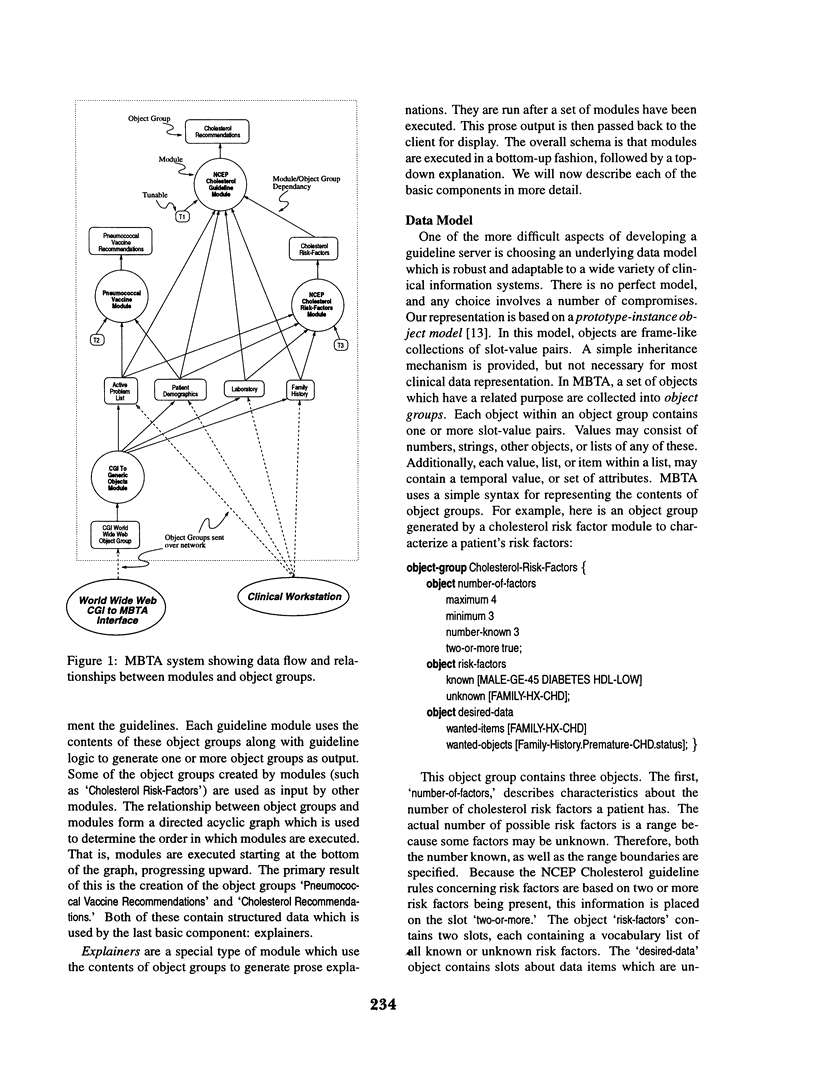
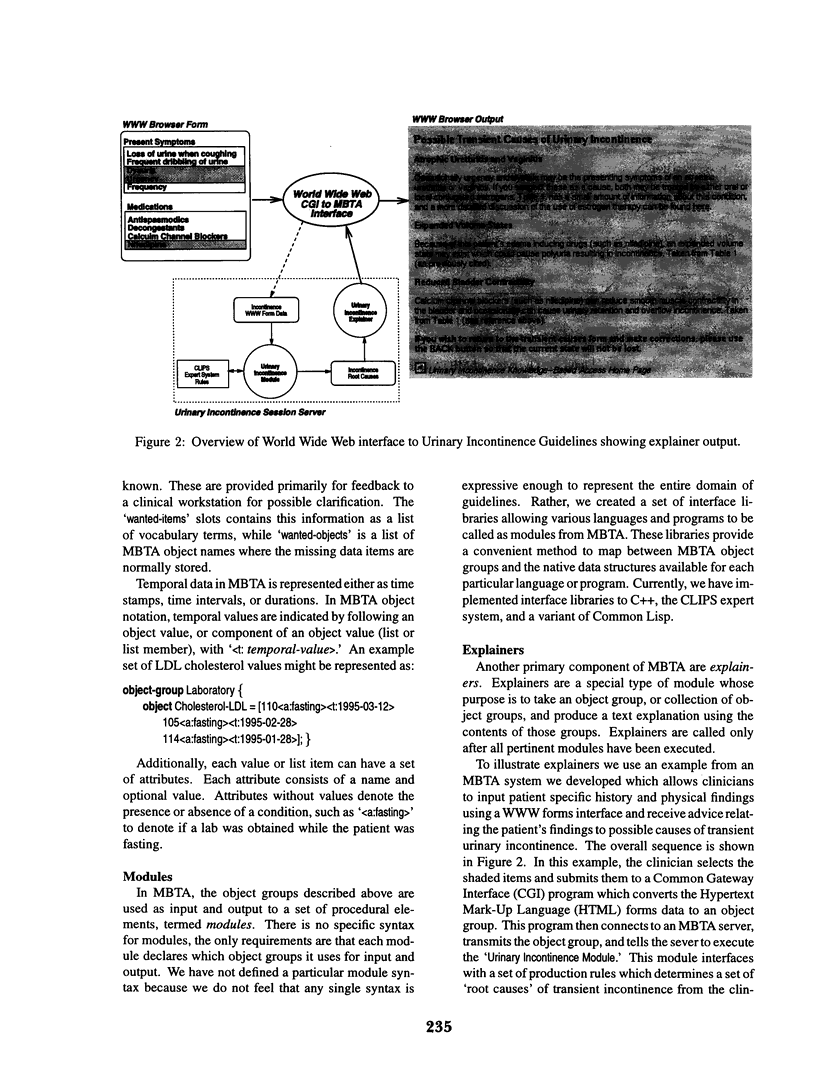
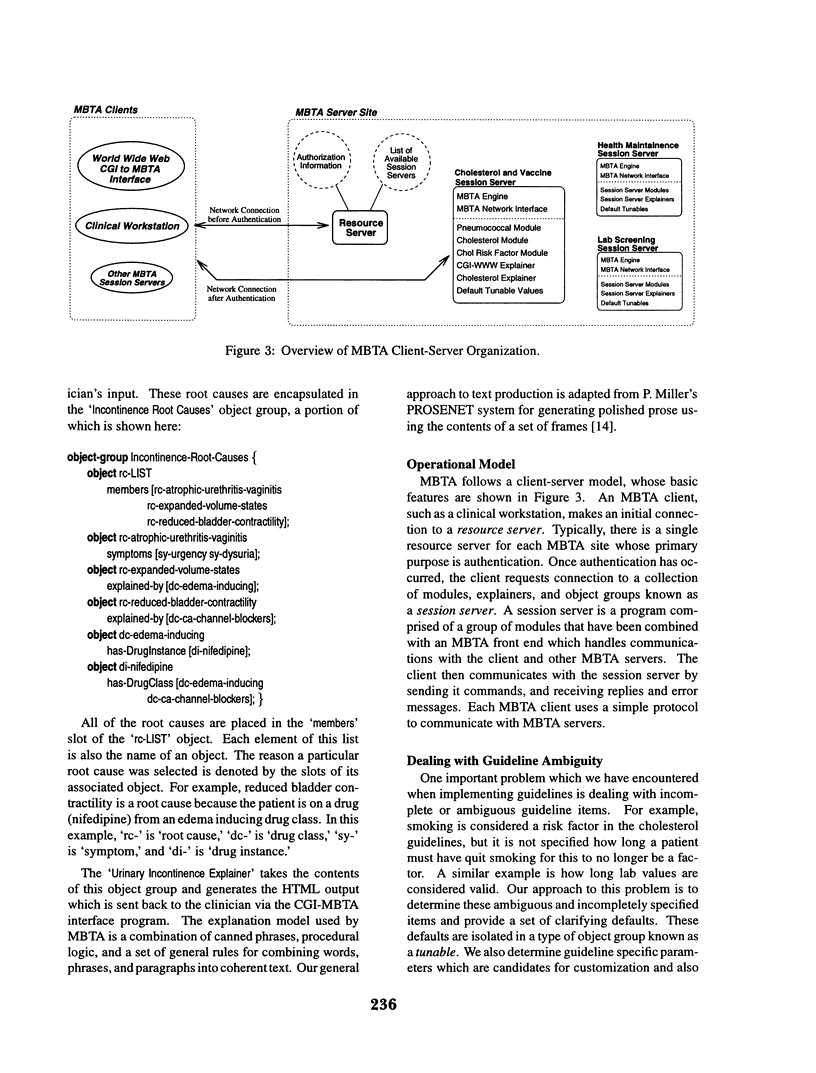
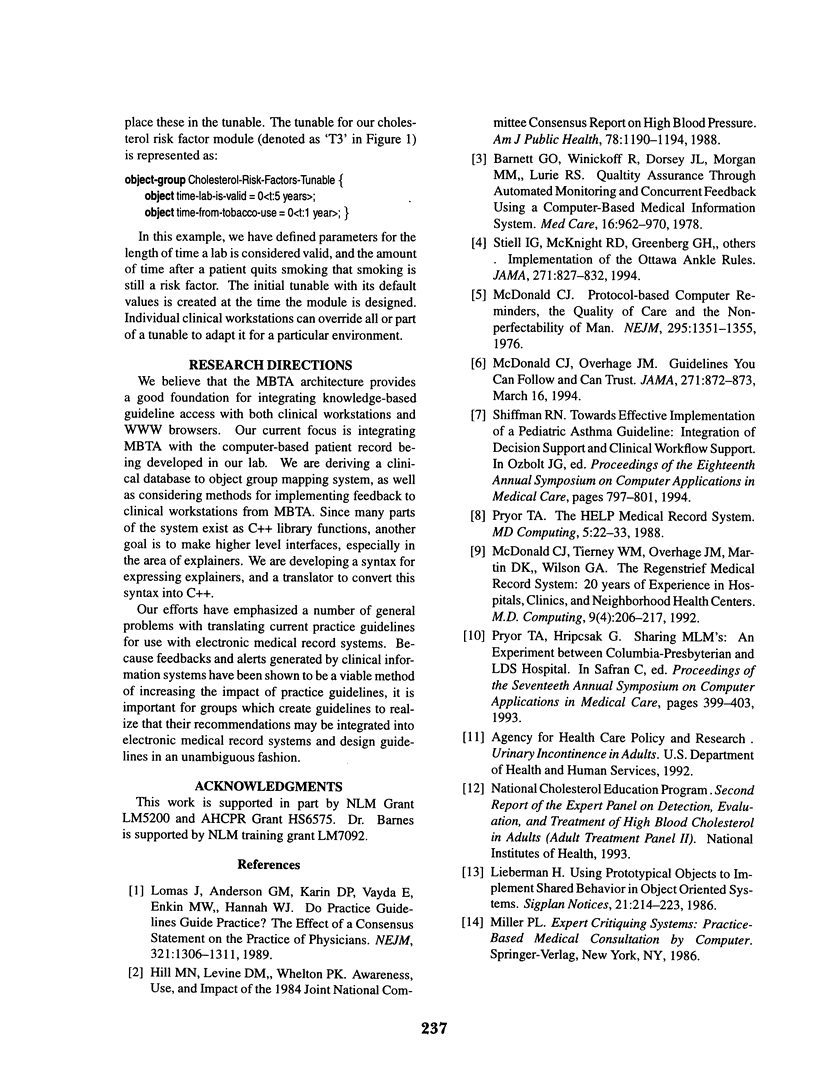
Selected References
These references are in PubMed. This may not be the complete list of references from this article.
- Barnett G. O., Winickoff R., Dorsey J. L., Morgan M. M., Lurie R. S. Quality assurance through automated monitoring and concurrent feedback using a computer-based medical information system. Med Care. 1978 Nov;16(11):962–970. doi: 10.1097/00005650-197811000-00007. [DOI] [PubMed] [Google Scholar]
- Hill M. N., Levine D. M., Whelton P. K. Awareness, use, and impact of the 1984 Joint National Committee consensus report on high blood pressure. Am J Public Health. 1988 Sep;78(9):1190–1194. doi: 10.2105/ajph.78.9.1190. [DOI] [PMC free article] [PubMed] [Google Scholar]
- Lomas J., Anderson G. M., Domnick-Pierre K., Vayda E., Enkin M. W., Hannah W. J. Do practice guidelines guide practice? The effect of a consensus statement on the practice of physicians. N Engl J Med. 1989 Nov 9;321(19):1306–1311. doi: 10.1056/NEJM198911093211906. [DOI] [PubMed] [Google Scholar]
- McDonald C. J., Overhage J. M. Guidelines you can follow and can trust. An ideal and an example. JAMA. 1994 Mar 16;271(11):872–873. [PubMed] [Google Scholar]
- McDonald C. J. Protocol-based computer reminders, the quality of care and the non-perfectability of man. N Engl J Med. 1976 Dec 9;295(24):1351–1355. doi: 10.1056/NEJM197612092952405. [DOI] [PubMed] [Google Scholar]
- McDonald C. J., Tierney W. M., Overhage J. M., Martin D. K., Wilson G. A. The Regenstrief Medical Record System: 20 years of experience in hospitals, clinics, and neighborhood health centers. MD Comput. 1992 Jul-Aug;9(4):206–217. [PubMed] [Google Scholar]
- Pryor T. A. The HELP medical record system. MD Comput. 1988 Sep-Oct;5(5):22–33. [PubMed] [Google Scholar]
- Stiell I. G., McKnight R. D., Greenberg G. H., McDowell I., Nair R. C., Wells G. A., Johns C., Worthington J. R. Implementation of the Ottawa ankle rules. JAMA. 1994 Mar 16;271(11):827–832. [PubMed] [Google Scholar]


